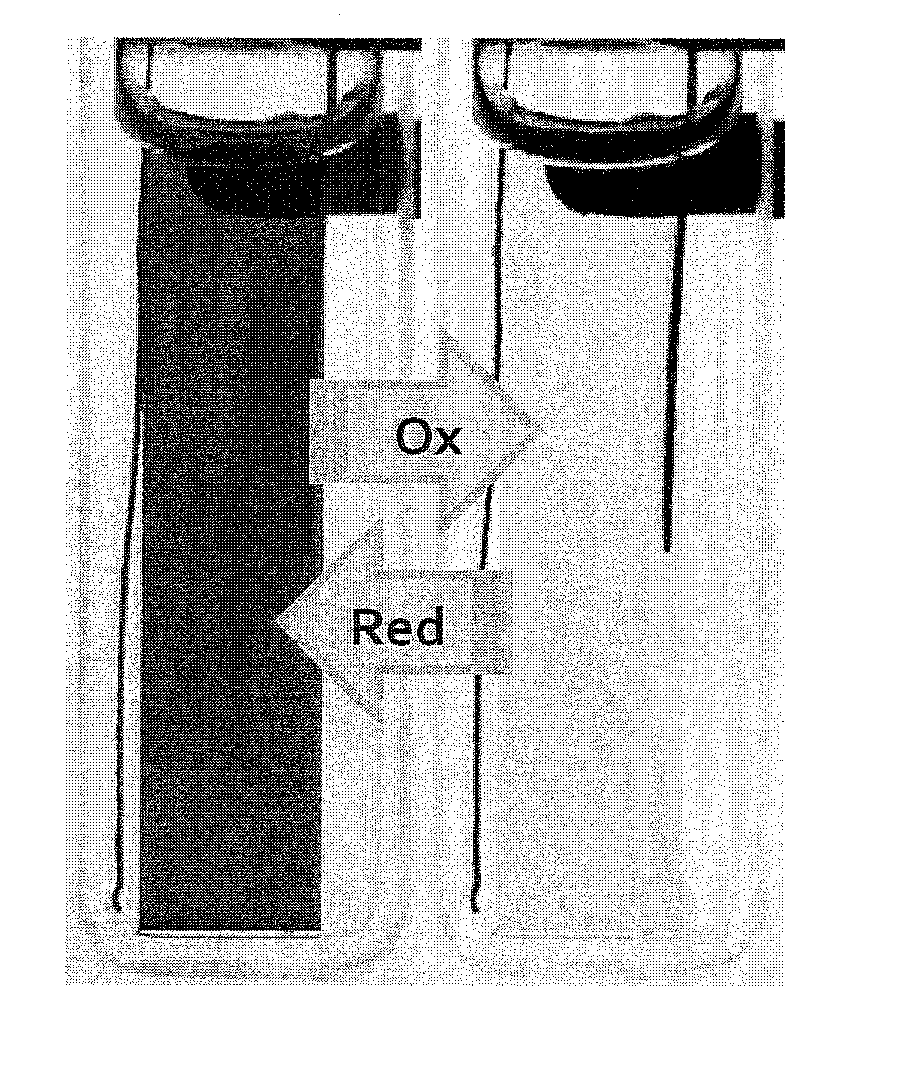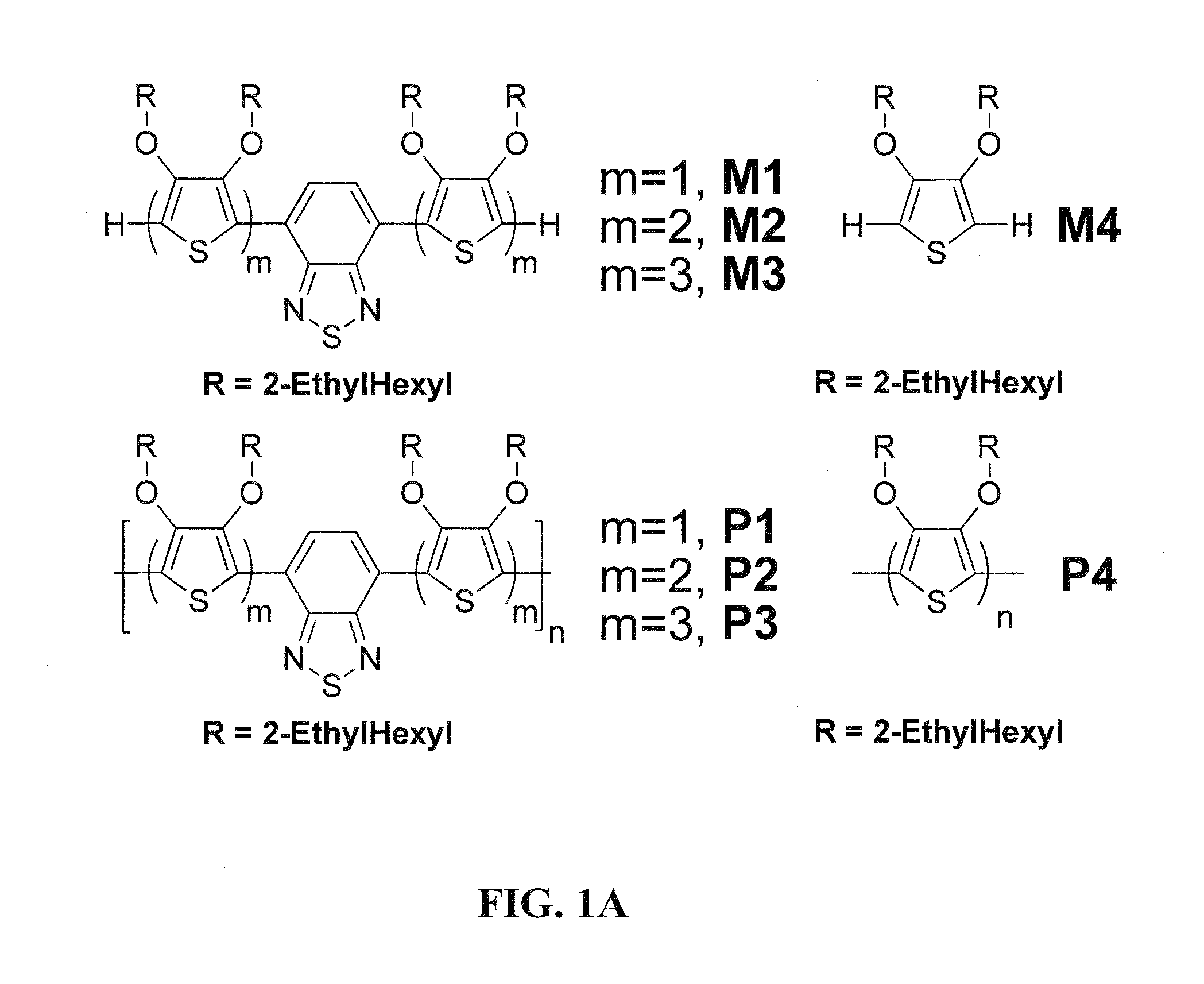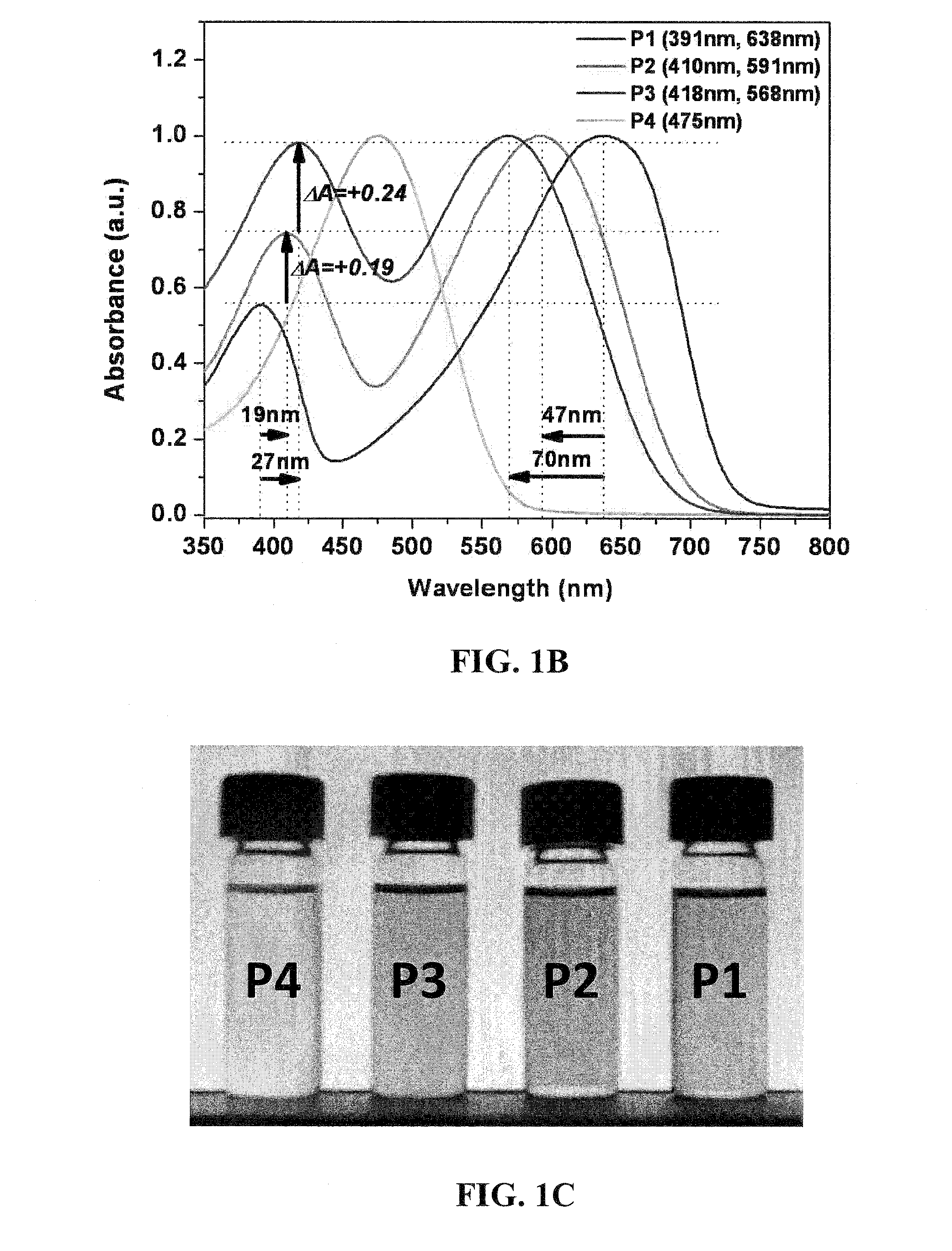Black soluble conjugated polymers with highly transmissive oxidized state
a conjugated polymer, highly transmissive technology, applied in the field of black soluble conjugated polymers with highly transmissive oxidized state, can solve the problems of failure of attempts to make saturated black polymers
- Summary
- Abstract
- Description
- Claims
- Application Information
AI Technical Summary
Problems solved by technology
Method used
Image
Examples
Embodiment Construction
[0015]Donor and acceptor units are used to achieve novel high-contrast electrochromic polymers (ECPs) that exhibits absorption in the visible where multiple energy transitions are controlled by varying the relative contribution of electron rich and poor moieties incorporated in the repeat unit of the donor-acceptor ECPs (DA-ECPs) as well as the first black-colored polymeric electrochromes. The DA-ECPs of the invention have repeat units constructed using internal acceptor units that are combined with terminal donor units to form a polymerizable oligomer, a DA-oligomer. The DA-oligomers are subsequently polymerized to yield the DA-ECP, resulting in short and long wavelength bands that overlap and yields neutral state colored materials possessing various color hues and saturations, where incorporation of a sufficient number of donor units yields a copolymer with an absorption spectrum that extends over the entire visible spectrum. The DA-ECPs can undergo rapid and reversible switching ...
PUM
| Property | Measurement | Unit |
|---|---|---|
| Water absorption | aaaaa | aaaaa |
Abstract
Description
Claims
Application Information
 Login to View More
Login to View More - R&D
- Intellectual Property
- Life Sciences
- Materials
- Tech Scout
- Unparalleled Data Quality
- Higher Quality Content
- 60% Fewer Hallucinations
Browse by: Latest US Patents, China's latest patents, Technical Efficacy Thesaurus, Application Domain, Technology Topic, Popular Technical Reports.
© 2025 PatSnap. All rights reserved.Legal|Privacy policy|Modern Slavery Act Transparency Statement|Sitemap|About US| Contact US: help@patsnap.com



